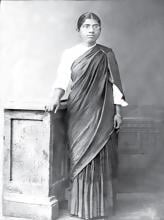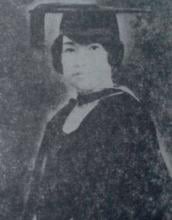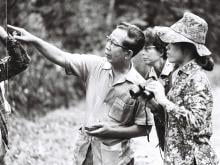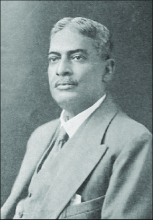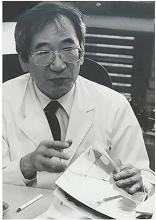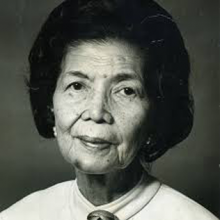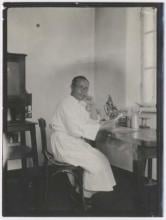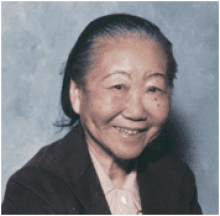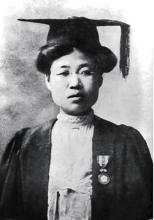Medicine
News

26 Jul 2006
Summaries of newsworthy papers in Nature include Planetary science: Methane storms on Titan, Microbiology: Acid-loving microbes thrive in deep-sea heat baths, Geology: Faulting the ocean floor, Solid-state physics: Spin doctors leave their mark/produce material benefit, How fishy fins arise

26 Jul 2006
In an attempt to understand the potential cause of rickets in Bangladesh, SARPV conducted a study of 70 households. The results show that diet, food preparation, sunlight exposure and breastfeeding are all major possibilities

23 Jul 2006
NATURE AND THE NATURE RESEARCH JOURNALS PRESS RELEASE - For papers that will be published online on 23 July 2006 including Large-scale turbulence - Nature Physics, Gleevec may cause heart problems - Nature Medicine, Neutralizing HIV - Nature Structural & Molecular Biology

21 Jul 2006
Stenting is the reinforcement of an artery to prevent it from closing following surgery. The study finds that the use of sirolimus-eluting stent (SES) would be a cost-saving option as compared with bare metal stent (BMS) implantation within the context of the Japanese healthcare system.

19 Jul 2006
Summaries of newsworthy papers for Nature VOL.442 NO.7100 including Astrophysics: Nova again, Geology: How the Red Sea is parting again, Biology: Unexpected inheritance, Materials chemistry: Graphite unpeeled and finally... Pack it in!
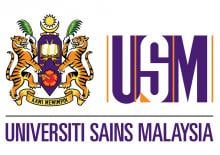
18 Jul 2006
Infertility is a major problem amongst 10-15% of married couples where the male partner contributes to 30-40% of the cause. Tongkat Ali has long been used as a traditional herbal remedy for the enhancement of male libido.

18 Jul 2006
Widespread malnutrition is prevalent among all FSVGD women and their children aged less than 5 years. A higher prevalence of malnutrition in 12-23-month age-group is probably attributable to inadequate feeding practice from birth, and the poorer nutritional status of female children might be due to gender discrimination in that community.

16 Jul 2006
Nature and the Nature Research Journals Press Release for papers that will be published online on 16 July 2006. Summaries of newsworthy papers include Neurodegeneration: Alternative genetic cause of devastating dementia, Cold sore virus can evade the immune system

13 Jul 2006
Adherence to antipsychotic treatment is an important aspect of long term management of schizophrenia and other related psychotic disorders. This study compared patients self-reports and clinician judgment of adherence behavior and explored their relationship with attitudes toward taking medication.

13 Jul 2006
The latest developments in brain-computer interface technology present a potential way to replace or restore lost motor function in paralysed humans. They are reported in two papers in Nature this week.

13 Jul 2006
A female-to-male transgendered scientist - analyses the suggestion that women are not advancing in science because of an innate inability. Other newsworthy papers include Air’s ‘radical’ self-cleaning ability, Molluscs of mat destruction, Hall of spin, Surprisingly, DNA has trouble unwinding, Wet is best, An atom abacus fashioned by light

12 Jul 2006
Illycaffè and the Academy of Sciences for the Developing World (TWAS) have joined forces to honour four eminent scientists from the developing world.

09 Jul 2006
Newsworthy papers from Nature and Nature Research Journals published online on 9 July 2006

06 Jul 2006
IGF-I is an important signal during development, including brain growth. Impaired IGF-I signalling at the blood-brain-barrier by aging, inappropriate diet, sedentary life, stress, inflammatory mediators associated to illnesses and inheritance may underlie the influence of all these factors in development of Alzheimer’s disease.

05 Jul 2006
The H5N1 virus has entered Nigeria multiple times according to analyses of the virus, which show that the strains in different Nigerian poultry samples are not closely related. The discovery indicates that the virus has entered Nigeria - the first African country known to harbour the strain - in birds travelling from a range of independent sources.

05 Jul 2006
Summaries of newsworthy papers include Astronomy: A sunshade for seeing planets, Neuroscience: Monkey brain 'tuned' for face recognition, Virology: Retroviral invasion of the koala genome, Microscopy: Spot the nanoflaw and Low-temperature physics: Spot the difference

05 Jul 2006
The theory that experimentation with cannabis is harmless and won’t lead to further drug use is challenged in an online publication in Neuropsychopharmacology this week.

04 Jul 2006
The scientists believe that their findings represent an important advance in our understanding of the human brain development and how cells respond to their extracellular environment.

03 Jul 2006
About 2.1 million Indian children under 5 years of age die each year. In spite of reductions in child mortality rate over the past two decades, the rate remains high at 87 per 1000 live births. The main causes are diarrhoea, pneumonia, and for deaths among the neonates asphyxia, pre-term delivery, sepsis and tetanus.

03 Jul 2006
Perspectives in Medical Education, Chromosomal abnormalities subdivide neuroepithelial tumors into clinically relevant groups, Serum insulin-like growth factor I in brain function and many more

03 Jul 2006
Child Survival in India, Immunological response to two hepatitis B vaccines administered in two different schedules, Zinc supplementation and serum zinc during diarrhea, Acute renal failure in neonatal sepsis and many more

03 Jul 2006
Both fresh and preserved cortical bone allografts possessed osteoinductive and osteoconductive properties. However, the fresh grafts proved to be superior than the preserved grafts.

03 Jul 2006
Acute effects of nitric oxide inhalation in ARDS, Adult basic life support, Diagnosing pulmonary embolism, Goodpasture's disease: A case report from South India and many more

02 Jul 2006
The diagnosis and management of pseudoseizures or psychogenic non-epileptic events, Psychiatric symptoms in neurological practice, Neurological legal disability, Spectrum of motor neuron diseases with HIV-1 infection and many more

02 Jul 2006
Scientists have found a drug that can be used to control malaria infection. The research, to be reported in the August issue of Nature Chemical Biology, shows that the drug, astemizole, interferes with a key process of the parasite.

28 Jun 2006
An International Journal of Obesity review paper discusses how the amount of sleep a person has, or their exposure to air conditioning may be as important causes of obesity as diet and exercise and a research article shows that ‘Activity genes’ that children are born with influence their physical activity levels more than environmental factors

28 Jun 2006
Summaries of newsworthy papers in Nature dated 29 June 2006

28 Jun 2006
The Journal of Indian Association of Pediatric Surgeons, JIAPS, (ISSN 0971-9261) is the official organ of Indian Association of Pediatric Surgeons and is published quarterly. The journal publishes original articles, case reports, review articles and technical innovations.

28 Jun 2006
Neurology India (ISSN 0028-3886) is a peer reviewed, open access journal published quarterly by the Neurological Society of India.
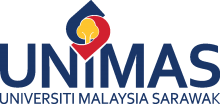
27 Jun 2006
Basic Engineering Geology For Tropical Terrain, Health Needs OF Older People In A Semi-Urban Village In Malaysia, Physiology At a Glance
Researchers
Sorry, no researchers coming up for this topic.
- « first
- ‹ previous
- 1
- 2
- 3
- 4
Giants in history
Michiaki Takahashi (17 February 1928 – 16 December 2013) was a Japanese virologist who developed the first chickenpox vaccine.
Irene Ayako Uchida’s (8 April 1917 – 30 July 2013) strides to understand genetic diseases such as Down syndrome paved the way for early screening of chromosomal abnormalities in foetuses.
Baron Kitasato Shibasaburo (29 January 1856 – 13 June 1931) was a Japanese physician and bacteriologist whose work led to a new understanding of preventing and treating tetanus, diphtheria and anthrax.
Maggie Lim (5 January 1913 – November 1995) was a Singaporean physician who promoted family planning and expanded the access to clinics to improve the quality of life for mothers and children in Singapore’s early days.
By isolating soil microorganisms and studying the compounds they produce, Satoshi Omura (born 1935) discovered almost 500 organic compounds with unique properties that were produced by these microorganisms, including many new antibiotics.
The founder of the Adyar Cancer Institute in India, Muthulakshmi Reddy (30 July 1886 – 22 July 1968), fought to uplift women and girls from impoverished situations.
Chinese-American virologist and molecular biologist Flossie Wong-Staal (27 August 1946 – 8 July 2020) was the first scientist to clone HIV and determine the function of its genes.
Maharani Chakravorty (1937 – 2015) was one of India’s earliest molecular biologists whose research paved the way for advances in the treatment of bacterial and viral infections.
Archana Sharma (16 February 1932 - 14 January 2008) conducted research into plant and human genetics that expanded the understanding of both botany and human health. In relation to botany, she uncovered the means by which asexually-reproducing plants evolve into new species.
The first Thai woman to receive a degree in medicine, Margaret Lin Xavier (29 May 1898 – 6 December 1932), is best remembered for her compassion towards her less privileged patients.
In 1915, pathologist Katsusaburo Yamagiwa and his research assistant Koichi Ichikawa became the first to prove that chronic exposure to chemicals can cause cancer.
In 1915, Koichi Ichikawa along with pathologist Katsusaburo Yamagiwa became the first to prove that chronic exposure to chemicals can cause cancer.
Husband and wife team, Kimishige (3 December 1925 – 6 July 2018) and Teruko Ishizaka (28 September 1926 – 4 June 2019) discovered the antibody class Immunoglobulin E (IgE) that triggers allergic reactions. They also discovered that IgE antibodies attach to white blood cells, known as mast cells, releasing histamine, which causes allergic reactions.
Husband and wife team, Kimishige (3 December 1925 – 6 July 2018) and Teruko Ishizaka (28 September 1926 – 4 June 2019) discovered the antibody class Immunoglobulin E (IgE) that triggers allergic reactions. They also discovered that IgE antibodies attach to white blood cells, known as mast cells, releasing histamine, which causes allergic reactions.
Japanese chemist Takamine Jokichi (3 November 1854 – 22 July 1922) founded the Tokyo Artificial Fertilizer Company, where he isolated a starch-digesting enzyme (named takadiastase) from the fungus Aspergillus oryzae.
Ground-breaking cancer researcher Kamal Jayasing Ranadive (8 November 1917 – 11 April 2001) advanced the understanding of the causes of leukaemia, breast cancer and oesophageal cancer through the use of animal models. She was also among the first to recognise how susceptibility to cancer is linked to tumour-causing interactions between hormones and viruses.
The research of Filipino pharmaceutical chemist Luz Oliveros-Belardo (3 November 1906 – 12 December 1999) focussed on essential oils and other chemicals derived from native Philippine plants.
Thai physician and conservationist Boonsong Lekagul (1907 – 1992) made major contributions to the preservation of his country’s wildlife.
Indian scientist and physician Upendranath Brahmachari (19 December 1873–6 February 1946) is best known for creating a drug called Urea Stibamine, used to safely and reliably treat visceral leishmaniasis (or Kala-azar), a severe infection caused by the Leishmania parasite.
Filipino chemist and pharmacist Manuel A. Zamora (29 March 1870 – 9 July 1929) is best remembered for his discovery of the tiki-tiki formula to combat beriberi, a disease caused by Vitamin B1 deficiency.
Korean parasitologist Seung-Yull Cho (16 November 1943 – 27 January 2019) is remembered largely for his pioneering works to control infections caused by helminthic parasites and his contribution to journal publishing.
Fe Villanueva del Mundo (27 November 1911 – 6 August 2011) was a Filipina paediatrician who founded the Philippines’ first paediatric hospital.
After witnessing death and suffering as a youth in his home village during World War II, Nguyễn Tài Thu (6 April 1931 – 14 February 2021) set his sights on alleviating pain by becoming a doctor. After studying Traditional Chinese Medicine in China in the 1950s, Thu returned to Vietnam to serve in military hospitals. Eventually, he became the country’s foremost practitioner of acupuncture, a technique he first learned by inserting needles into himself.
Minoru Shirota (April 23, 1899 – March 10, 1982) was a Japanese microbiologist who invented the popular fermented drink Yakult.
Wu Lien-teh (10 March 1879 – 21 January 1960) was a Malaysian-born doctor who invented a mask that effectively suppressed disease transmission. Winning the prestigious Queen’s Scholarship enabled Wu to become the first Chinese student to study medicine at the University of Cambridge.
David T. Wong (born 1936) is a Hong Kong-born American neuroscientist who is best known for discovering the antidepressant drug fluoxetine, better known as Prozac.
Indian organic chemist Asima Chatterjee (1917 to 2006) studied the medicinal properties of plant products, especially compounds known as vinca alkaloids.
Chika Kuroda (24 March 1884 – 8 November 1968) was a Japanese chemist whose research focussed on the structures of natural pigments.
Umetaro Suzuki (7 April 1874 – 20 September 1943) was a Japanese scientist best remembered for his research on beriberi, a disease caused by vitamin B1 deficiency, characterized by limb stiffness, paralysis and pain.
Salimuzzaman Siddiqui (19 October 1897 – 14 April 1994) was an artist and chemist from Pakistan whose research focused on natural products from plants.
Barry Paw (29 August 1962 – 28 December 2017) was a biologist and oncologist who discovered several novel genes and their functions in red blood cells.
Syed Qasim Mehdi (13 February 1941 – 28 September 2016) was a Pakistani molecular biologist who was a founding member of the Human Genome Diversity Project (HGDP), which assessed human diversity by studying human migration, mutation rates, relationships between different populations, genes involved in height and selective pressure.
Tsai-Fan Yu (1911 – 2 March 2007) was a Chinese-American physician and researcher who was the first female full professor at Mount Sinai School of Medicine. She discovered that gout, a condition characterized by the painful inflammation of joints, was caused by elevated levels of uric acid in the bloodstream.
Min Chueh Chang (10 October 1908 – 5 June 1991) was a Chinese-American biologist who studied fertilization in mammalian reproduction.
A Japanese surgeon, Tetsuzo Akutsu (20 August 1922 – 9 August 2007) built the first artificial heart capable of keeping an animal alive.
Ogino Ginko (3 March 1851 – 23 June 1913) was the first registered female doctor to practise modern medicine in Japan.
Esther Park (1877-1910), born Kim Jeom-dong, was the first female Korean physician to practise modern medicine in Korea and trained the first generation of Korean female doctors.







